An affordable self build housing project in Lewisham, London, has come a step closer with the local council signing the 250-year lease on the land in Church Grove, Ladywell.
Signed by Lewisham Mayor Damien Egan (right in photo), the deal secures the site for the community-led project by the Rural and Urban Synthesis Society (RUSS). This paves the way for the building to begin for the 33 homes on the 1-acre site. Including a range of homes, from one- to four-bedrooms.
The site is a Community Land Trust, with the land held by the trust and homes valued mostly on the cost of building, as opposed to the cost of building and the price of land. This mechanism helps keep properties affordable, combined with the fact that the homes have been designed to be simple and cost effective to build with the option for future residents to get involved with construction to bring costs down even further.
To celebrate the milestone, a time capsule was buried on the site of the newly completed Community Hub, a training facility for self builders that was recently completed with the help of 90 volunteers over the last six months.
RUSS Chair Anurgag Verma said: “It’s been a long haul getting our project to this stage, and Lewisham Council has supported us on many occasions along the journey. Our site at the end of Church Grove is one of the main things they’ve assisted us with, so the signing of the lease on the land is an important hurdle for us to clear.”
Photo credit: Jeff Teader
We’re following the story of Anne, mother of six boys who is building a home for her family and one for the grandparents on the same site. They used the Right to Build to help them escape the private rental sector. We pick up from Anne’s decision to contemplate the possibility of building her own home.

Having decided to research the possibility of using the Right to Build as a route to solving our housing needs (read Part 1, here), I enlisted some help to find out more.
David Burrowes, my local MP, said he did not know a lot about the Right to Build legislation but would try to find out how it could be effective. He believed the local authority would be unlikely to want to help and would want to sell any Council land at the highest price for maximum profit. However he gave me the contact details of Enfield’s Head of Development Management – their chief planning officer – so that I could make some headway with the council.
Meanwhile, we started our own detective work searching for local land in the area, with Google maps proving a great tool. It was interesting to look at maps with a different eye, spotting little pockets of land that just might be plots and checking them out at the Land Registry. If you have an address this is simple to do online and costs only £3 per result.*
One plot that was of interest turned out to be made up of two triangles one private and the other Council owned. We also Googled “land owned by Enfield Council” and surprisingly they provide a full list. It had 2,300 lines and in a tiny entry amongst playgrounds, schools and car parks we found a couple of corner plots listed as “vacant land”, so it was time to talk to the council.
Since 2015 the government obliged local authorities to publish this information and introduced a ‘Right to Contest’. They estimate that 40% of developable land is in public hands and if you think that any piece could be put to more productive use you can challenge them to sell.
Getting to speak to Enfield’s Head of Development Management was no easy task. I left several messages and emails. No response. I took encouragement from listening to how Jamie Oliver got his breakthrough into the River Cafe. He rang every day trying to speak to Ruth Rogers leaving messages until one day he got through and was invited to an interview.
It became part of my routine. Every day I rang and left a message. I resolved to make each call as if it were the first time until one day he happened to pick up the phone. He was friendly enough and gave me an appointment for the next week.
The meeting however was rather disappointing as he was unaware of the Right to Build legislation and the Registers. However he did mention that our timing was good, as the council had to work out its approach to the legislation and how to incorporate it into the local plan.
During the meeting we tried to establish if he was the right contact for the Right to Build, but he didn’t know at that point. On a positive note, he looked at the plots of land we had identified and thought they had potential for planning but we would need to speak to the Property department about the possibility of purchasing them. Who knew that there was Planning, Property, and Housing departments and you would have to trek from one to the next!
Meanwhile, my father in law had taken interest in our project and had subscribed to Homebuilding and Renovating Magazine. One of the Homebuilding & Renovating shows was coming up at Birmingham in March 2017 and he suggested we go. A train journey spent planning and we had a full day mapped out, starting with ‘A Beginner’s Guide to Building Your Own Home’ by expert self builder David Snell.
His practical overview dealt with finding plots, budgeting and finance, which was crucial as up to that point I had believed it was financially difficult, but he gave us hope and inspiration. When we met him later in in the Experts Area he congratulated us on our entrepreneurial work in searching for plots!
We also visited BuildStore’s self build mortgage stand, where they confirmed that our self build was viable from a financial perspective, with a mortgage financing the building in stages, including the purchase of land. Things were looking up!
Our last lecture was with Michael Holmes of Homebuilding & Renovating about the Right to Build, who was also on the board at the National Custom and Self Build Association (NaCSBA). He had been at the forefront of the new legislation and encouraging local authorities to release council land for self builders. He stressed how the Right to Build Act offers hope for residents wanting to build and live in an area where they have grown up in. The lecture was dynamic, inspiring, but did the legislation really have the teeth to force the local authorities to help self builders?
While chatting to Michael afterwards he advised us to push the local authority as much as we could. This is because they have to grant permission for the number of plots reflected by the numbers who have signed up to the register (in one base period) within 3 years. However, he also explained that this would not necessarily be to us. Our challenge would be to see if we could get them to release land to us, as we were pioneers!
*It’s hit and miss. Land is only registered if it has changed hands in the last 20 years and finding a piece that may not have a straightforward address – like a patch of land between two houses or a bit of private road – is more difficult. Also beware! If you Google “land registry” half of the sites are ‘services’ simply reselling land registry search at inflated prices. I paid £12 the first time before discovering this!
Read the other parts of the Self Build Family Build Blog.
Part One: Deciding to Self Build, the Turning Point
Part Two: Looking for Land in London
Part Three: The Land Value Idea
Part Four: A Small Matter of Access
Part Five: The Mystery of the Road Unravelled
Part Seven: Best Consideration Pursuing our Community Building Idea
Part Eight: Calling on Higher Parts
On Saturday 29 February the team at Graven Hill is inviting would-be homeowners to take a peek inside its latest show house by HexxHome on the Bicester site.
Designed by Charlie Luxton in partnership with NaCSBA member HexxHome, the three-bedroom property comes with a balcony, as well as a host of eco features including solar panels, battery storage, underfloor heating and a mechanical ventilation heat recovery (MVHR) system for heating and cooling with maximum efficiency.
Visitors to the site on Saturday can enjoy a tour of the HexxHome, and the opportunity to find out more about building at Graven Hill, including the range of different routes to home ownership available on the site. This includes the chance to discover the brand new release of custom build new homes – a range of three, four and five-bedroom homes that are available to reserve off-plan (From left to right below, the Dee, Tyne and Dart). The homes come with a completely bespoke choice of layout, fixture and finish options, giving you the chance to have a tailored home that’s fully commissioned by you, with someone else doing all the hard work.
Graven Hill already has a selection of two and three-bed terraced homes for immediate purchase, which are ready to view, if your need to move is more pressing. The custom build and new homes on the site have been designed to meet a range of budgets and are available to purchase with as little as five percent deposit with Help to Buy.
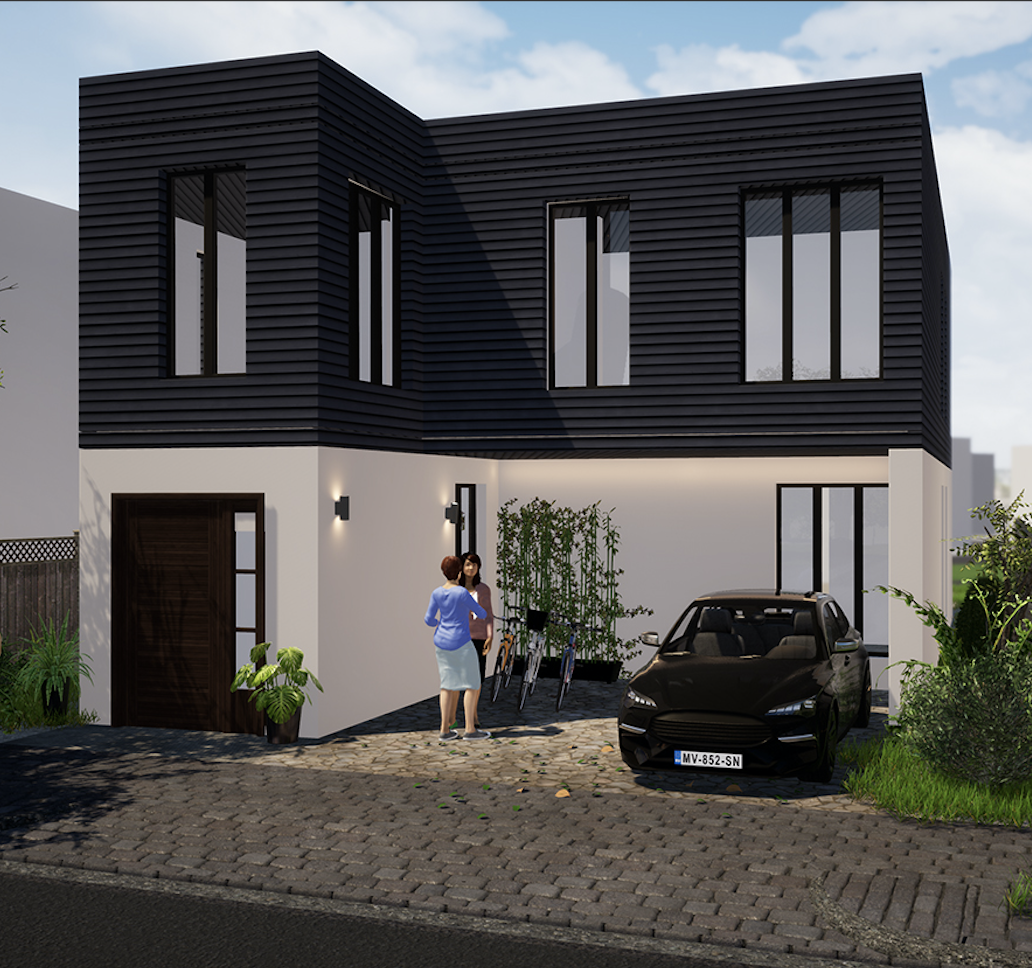


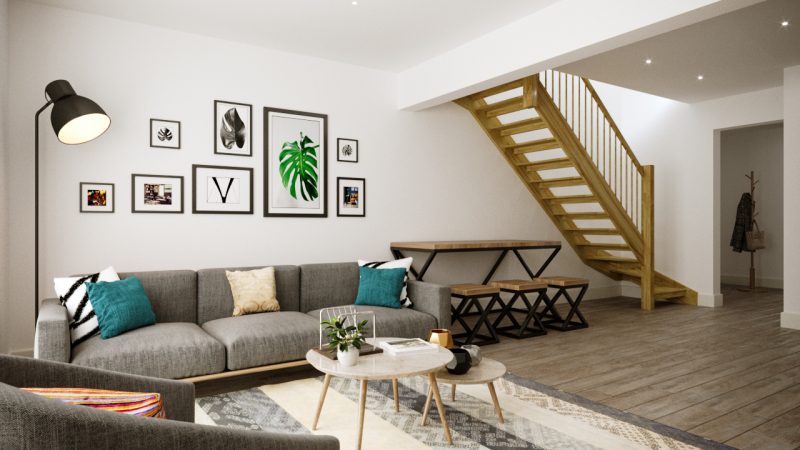
Create your ideal home at Graven Hill
HexxHome boosts the offering for visitors to the site seeking information and inspiration for building, following the launch of the Build It Self Build Education House in October 2019, a new facility taking novice builders through the range of processes and decisions needed to be made on your journey.
Karen Curtin, managing director at Graven Hill, said:
“Saturday is set to be a real ‘access-all-areas’ event. Not only will we be unveiling our first off-site masonry show home, but visitors will also have the opportunity to preview and reserve their dream home from our updated range of custom build new properties.
“In our opinion, it’s time to take a new approach to the house buying process and put the power back into the hands of the purchaser. With speed, efficiency and cost-effectiveness on their side, prefabricated methods of construction have certainly earned their place alongside ‘traditional’ housebuilding methods. They provide an ideal solution for those who wish to create a bespoke, low-energy home, without the hassle of managing a construction process.”
Date: Saturday 29 February.
Where: Graven Hill Marketing Suite, 11 Foundation Square, Bicester, OX25 2AQ.
Water Lilies in Kingweston, Bristol, is a 33-home eco self build housing community enabled by NaCSBA members Bright Green Futures, with three phases offering different options of home, from self build to custom build.
With 70% of plots sold, Phase 2 offers a rare opportunity to design an eco-home bespoke to the buyer’s needs and tastes. This presents the chance to bring your ideas to life to create a home like nothing else on the market, with creative support from acclaimed Clifton Lido architects, Marshall and Kendon.
Suited for people at any stage of life, Water Lilies has attracted a diverse, multi-generational group of people to the award-winning eco development set on the edge of a conservation area. The site has direct walking and cycle routes into parkland near Blaise Castle and Kings Weston House and is a short trip away from the centre of Bristol.
Designed in harmony with the existing site, the scheme repurposes a reservoir as an underground car park to create a traffic-free shared garden, with a multi-purpose community building at the heart of the development.
Studies have shown that well designed neighbourhoods have a positive impact on wellbeing, and the availability of community facilities and access to green space are key contributing factors to people’s perceptions of where they live, a sentiment reflected in the government’s recently published Building Better, Building Beautiful report.
The development offers a flexible approach to modern living, with the shared garden ideal for children to play, while the multi-purpose community building can serve as a co-working hub for homeworkers. In fact, one of the benefits of the custom build route is that homeworkers can plan a dedicated office or studio space into their home, while older generations can accommodate potential future life changes with a flexible, accessible home design.
Constructed with sustainably sourced timber, the A-rated energy efficient homes include solar energy while giving y flexibility in the design and layout of internal spaces.
This means buyers can craft their home to complement their lifestyle and future-proof it to adapt to your household’s changing needs. One Water Lilies homebuyer highlighted this: “We got to imagine how we would live in it today, but also plan for the future with our family growing and having options to support our parents if needed.”
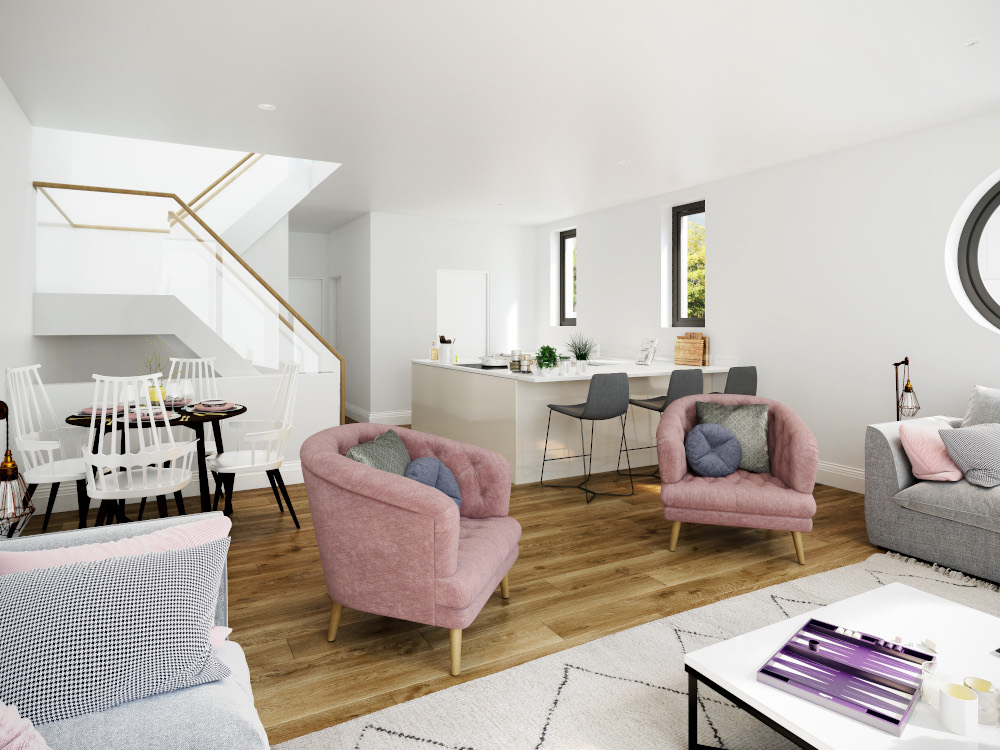
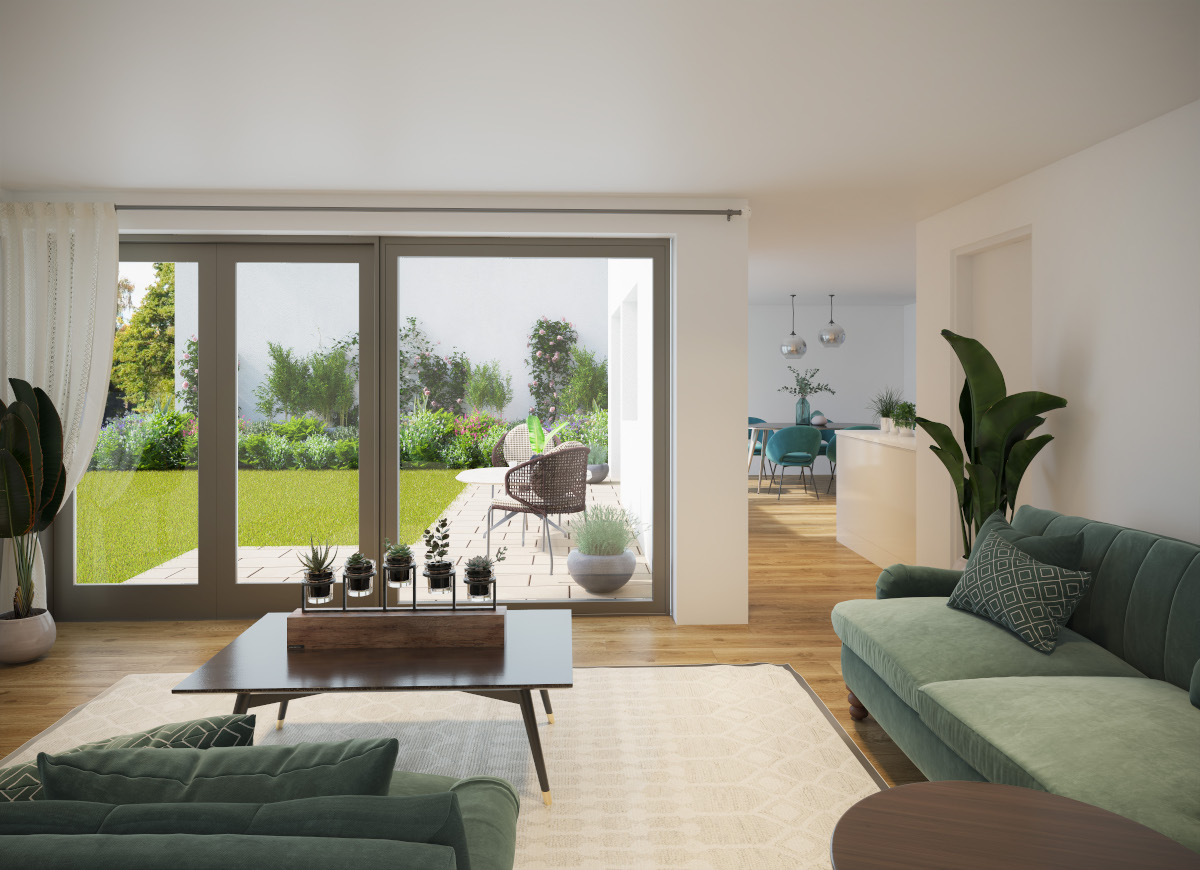
Address: The Old Reservoir, Kingsweston
Price: £475,050–£600,700
Bedrooms: 3–6 (flexibility with custom build)
Development: Water Lilies
Developer: Bright Green Futures
Contact: Bright Green Futures, 0117 955 6718, hello@brightgreenfutures.co.uk, www.brightgreenfutures.co.uk
A new community build project supporting veterans to self build their own homes has started in Waterworks Lane, Leominster, Hereford. Stonewater Housing Association is working with the Community Self Build Agency (CSBA) and the Royal British Legion to create 19 new homes on a mixed development of two-bed flats and a range of houses, with the final homes available for affordable rent.
Many of the homes will be on offer to ex-service personnel, with the opportunity for up to nine veterans to be involved as builders on the scheme, where they will receive training and support. Veterans that help build the scheme will then be offered the option to rent one of the properties on completion, gaining a secure family home and a set of valuable and transferable skills.
Stonewater’s Waterworks Lane project illustrates how a range of organisations can work with local councils to provide much-needed new homes using alternative models, that can bring a range of sustainable goals to the table, including improving lives. The project will benefit from Homes England funding, part of a £224m award to the strategic Stonewater and Guiness Partnership that will create 4,500 homes by 2020.
Matthew Crucefix, Assistant Director of Development (West), said: “At Stonewater our commitment to providing everyone with a place they can call home is at the core of everything we do. In Herefordshire, there is a large armed forces presence and so there is a constant need for veteran accommodation.
We’re proud to lead the way alongside our community partners and show other organisations how important schemes like this are for the wider community. We hope to inspire others to take on similar projects in other areas of the country with similar challenges.”
Councillor Barry Durkin, at Herefordshire Council, said: “We are committed to supporting local veterans across Herefordshire and this new self-build partnership with Stonewater and Alabaré is a great opportunity to provide more affordable housing for veterans.
“This scheme not only provides much needed homes but will also provide the veterans with the training and skills needed to not only help build their own homes and but hopefully also gain future employment.”
Since being set up in the late 1980’s, Community Self Build Agency (CSBA) has helped hundreds of homeless or vulnerable people to have the opportunity to build their own home. From May 2019 CSBA has become part of Alabaré, which manages the day-to-day operations.
CSBA has completed over 178 self-build projects across the UK to date, developing in-excess of 1200 housing units to some of the most disadvantaged members of the local community. Their award winning schemes have included the Nelson Project in Plymouth – a 24-home site that included 12 self-build homes for the military veterans and 12 affordable homes.
Major Ken Hames, MBE, of Alabaré, said: “We’ve worked on similar projects in other parts of the country which, whilst challenging to get off the ground, really make a long-term difference.
“For the veterans fortunate enough to be part of the project they have a unique opportunity to gain the skills that could lead to long term employment, and the support to ultimately be able to live successful, independent lives once more. Together they will be creating a community that they can call home.”
Six custom Build plots in Lowfield Green, York, are all now reserved, with the new homes expected to be completed by November 2021.
Specialist custom build enabler Custom Build Homes has been working with City of York Council to enable the plots, supporting people interested in an owner-commissioned home with their applications, with the plots sold by bids following over 100 enquiries.
The south-facing plots at Lowfield Green are large enough to accommodate a large, three-to-five bedroom home, with the option to include a garage, with large gardens, with the purchaser’s ages spanning from 30-70, including first time buyers, reflecting the breadth of interest in a custom-built home.
The plots are part of a larger expansion to the city of York, which includes a range of new public amenities, green space and a mix of speculatively built new homes and a new co-housing scheme, brought on by design-led housing specialists Yorspace.
As an enabler, Custom Build Homes markets the plots, and is able to explain the process to potential buyers, including questions around design, delivery, finance, legal issues and planning. It also offered workshops to ensure the buyers fully understand the custom build process, including the parameters around what they can build with the planning permission for the site.
Anecdotal research by NaCSBA shows that educating consumers about the process of custom building, which often varies site-by-site, is a key element in ensuring that the process runs as smoothly as possible, and people know what to expect.
Tim Moon, City of York Council’s Community & Self Build Officer said, “Custom Build Homes has an unparalleled knowledge of the custom and self-build sector and has supported us to write our first ever design code, legal contracts, answering my constant barrage of questions and even standing out in the pouring rain showing prospective buyers our first ever serviced plots!”
Source: Custom Build Homes Image caption: Lowfield Green, York © 2020 Custom Build Homes
We’re following the story of Anne and her husband as they work to build a home for their family of six boys, and also build a home for the grandparents on the same site. Crucially, they’re building what they could not afford to buy in their local area, and they’ve used the Right to Build to help them achieve it.

“You won’t get another fantastic opportunity like this at this price… it will be gone in days,” went the estate agent’s pitch. The fantastic opportunity was a tiny ex-local authority 2-up-2-down terraced house in an estate that would have been nice apart from the unkempt gardens, rubbish in the driveways and furniture in the backyards. The house had a loft extension, and it was only half a million pounds! I felt slightly sick at heart and the knot inside me tightened – I couldn’t quite bring myself to believe that this was the answer to our housing need.
We’d spent months looking for a new home. Our landlord of 10 years wanted his house back and in our search we decided to explore all options. Ideally we wanted to buy in the same area, so that we could stay close to our parents, not only to benefit from their help while the children were young but also to be useful to them as they grew older, and to remain in the community we had grown attached to and engaged in over two decades of marriage.
But buying in London suburbs is not easy, and with inflated house prices and a large family the options are extremely limited. What little that was suitable and in our price range was snapped up quickly.
A few weeks before I’d found a sweet ex-authority cottage in a nice setting that we could just about afford and I was determined to make an offer. But it was tiny, with two bedrooms but perhaps with the potential to extend into the loft. The downstairs floorspace was also small, but to me it didn’t matter as I thought we could make it work.
However, my husband Peter is an architect and he didn’t agree. His view was that the house couldn’t really cope with extending and although it would be ‘permitted’, that is allowable from a planning point of view, we would be the first in the block to do it and it would be unkind to the little house and out of place.
In reality, even when extended it would have been too tight for a family of six boys. I looked at Help to Buy but the homes within our price range were unsuitable apartments characterised as ‘luxury’, which in reality meant a few shiny taps and shiny floors, tiny box rooms and an enormous visitors’ toilet big enough to sleep two children.
Of course the fallback position was to rent again, but rents had also seriously inflated during the last 10 years we were in our home. Houses for rent were also obviously in short supply as they quickly disappeared off the market, despite huge upfront agency costs.
But there were other barriers. For us it was our children or rather the fact that we have six, and all boys. I would never say until I had to but one can hardly hide it and as soon as it came out the conversation would change. “Was I on benefits?”, “Was I 100% sure I wasn’t?”. Appointments to view houses were cancelled and on one occasion a holding deposit was given back because the landlady decided the kitchen was too small. I felt humiliated and never wanted to be in this position again.
Our prospects were bleak, but while standing in the tiny house looking at the dismal surroundings I had a change of heart and a spurt of determination. Peter had said that we should look at building our own house, and I had never taken it very seriously. I’d talked to a few friends and looked at a few auction sites but never really thought of it as a realistic option. But I decided to think again.
We lived in London, so where would we find the land? How could we afford to build? Most of our friends had said it was impossible. The obstacles and efforts had simply seemed too enormous. But now I was determined to give it a good try and at least if we did end up in the tiny house on the estate we would know that we had tried everything.
I wrote to an old friend who was a small builder/developer and asked for his advice. On the first day of the New Year of 2017 he wrote back, saying, “Very exciting to be looking at building your own home. It’s not easy finding a plot to be fair, but the Government seems to be more on your side than ever.” And he sent a link to the government press release ‘Boost for aspiring self-builders’. This was an encouraging and rather exciting moment.
The government was trying to help ordinary families build homes in the boroughs they wanted to live in. Councils were required to launch Self Build Registers for people to express an interest, and the Housing and Planning Act 2016 required local authorities to ensure that they had granted ‘permission’ for enough sufficient shovel-ready plots to match the local demand on their register.
What did this mean in practice? Could the Council really provide us with a plot? I somehow doubted it but I was determined to find out, so I signed our local Enfield self build register and requested an appointment with our local MP to find out just what the legislation intended.
Read the other parts of the Self Build Family Build Blog.
Part One: Deciding to Self Build, the Turning Point
Part Two: Looking for Land in London
Part Three: The Land Value Idea
Part Four: A Small Matter of Access
Part Five: The Mystery of the Road Unravelled
Part Seven: Best Consideration Pursuing our Community Building Idea
Part Eight: Calling on Higher Parts
The Passivhaus Trust is supporting the International Passivhaus Open Days scheme in the UK, offering aspiring Self Builders the opportunity to experience these unique, sustainable homes in person. Between 8-9 November 2019 a range of homes across England, Wales and Scotland will be opening their doors, sharing their owners’ and designers’ Passivhaus stories for anyone considering a Passivhaus approach to a build project.
Passivhaus is a construction method that delivers a high level of comfort while using very little energy for heating and cooling. They are rigorously designed and construction according to principles developed by the Passivhaus Institute in Germany. Construction includes high levels of insulation, high performance windows with insulated frames, and, crucially, an airtight frame combined with a mechanical ventilation heating recovery system.
This year NaCSBA member 21 Degrees is coordinating the open days around Yorkshire with three local Passivhaus homes throwing open their doors, including Denby Dale Passivhaus (below left), Golcar Passivhaus (below right) and Kirkburton, as well as housing free Passivhaus talks from its Heath House Mill base near Huddersfield.
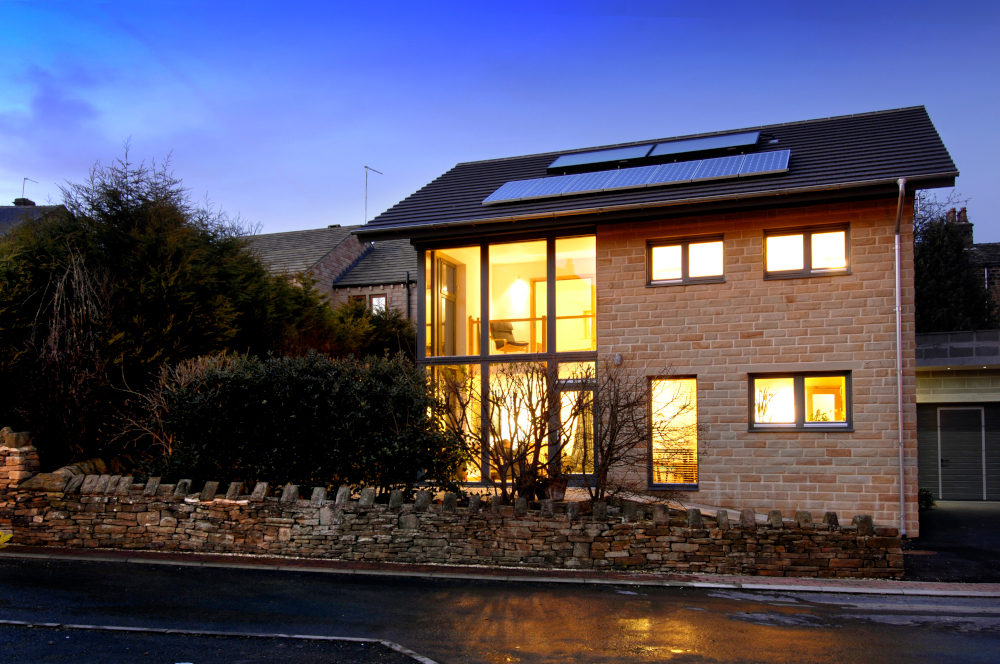
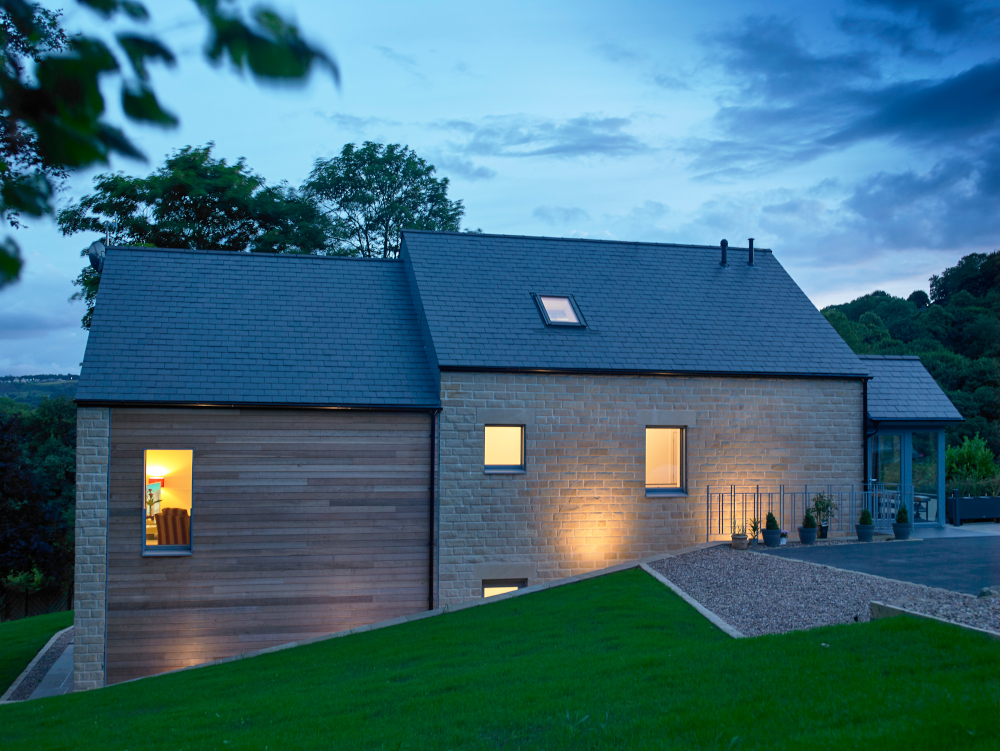
On the 22-23 November, the National Self Build & Renovation Centre in Swindon is running a weekend of events in conjunction with the Passivhaus Trust, with talks, workshops and demonstrations aimed at selfbuilders interested in Passivhaus.
New tech platform MyPlot has launched in the Self Build market, aiming to make the process of building as simple as possible by bringing together a range of services to assist novice builders on a single platform.
While self-build is on the ‘bucket list’ for many, it has yet to become a mainstream housing solution in the UK. For some would-be self builders, the process can appear complex especially for those with a full-time job and family obligations, or without any construction know-how.
While finding a plot remains a significant barrier for some, for others navigating the complex planning system, sourcing trusted contractors or securing finance for the project can be key challenges. For those without a property background these obstacles can feel insurmountable, and many will return to the established homes market, which leaves their self-build ambitions unfulfilled.
To help remedy this, MyPlot has been created to assist aspirational self-builders with the process. Users can find their ideal plot, and source contractors from the directory on the platform to interview and appoint the entire team to take their home from concept to reality.
From planning consultants, architects, building contractors and mortgage advisors, the experts listed, are all experienced in delivering self-build projects, and are carefully selected by MyPlot to give novice self-builders the confidence in their choices.
The company aims to grow the number of self-build homes in the UK from under 10% of new housing in the UK, which currently creates around 12,000 homes per year. In contrast, The Self Build Housing Market Report Analysis 2016-2020 revealed self-build rates in Austria, Belgium, Italy and Sweden are as high as 70 per cent.
NaCSBA research indicates that in the first seven months of the Right-to-Build registers opening, 18,000 people had signed up, jumping to 40,000 by December 2018, so demand is definitely there.
MyPlot Director, Paul Smith, said: “In Europe, it’s much more straightforward to source a plot of land, and the planning system is less onerous – there’s also more support for those embarking on the process.
“With MyPlot, we’ve looked at the issues and offered a solution, filling the gaps and removing the complexity by providing a directory of self-build experts on a single platform.
“The government has been very supportive of self-build, particularly in recent years, introducing policies to oil the wheels and make it more attractive financially, but it’s often the practical considerations that put people off, such as financing the project and living arrangements during the build.
“What’s more, the assumption that self-build is something only wealthy people do has to be challenged – we hope that MyPlot helps to encourage people to at least be open to the idea, rather than dismiss it out-of-hand.”
Credit: Flo Pappert on Unsplash
National Custom and Self Build Week ran from 6-12 May and was a huge success, helping more people access Custom and Self Build, and also flagging up the benefits and challenges of to Government. Here’s an overview of what went on.
At the invitation of Richard Bacon MP and Right to Build Task Force ambassador, NaCSBA held a reception at the House of Commons, bringing some if its members together to be addressed by Housing Minister Kit Malthouse and Kevin McCloud, as well as event sponsor Ecology Building Society.
There was a great atmosphere at the event, with Self Build, Custom Build and community-led housing celebrated, with commitments to do more and offer greater support for the sector from the highest levels.
Read more on NaCSBA’s news pages.
Finally, off the back of National Custom and Self Build Week, Victoria Prentis MP brought a Promoting Self Build debate to the House of Commons.

Self Build took centre stage at Grand Designs Live with NaCSBA on the main stage every weekday – to a packed auditorium eager to find out more about how, and where, to build. From the Right to Build registers to finance, NaCSBA’s team spent the week busting the myths that Self Build is Too Hard.
Plus our members joined the Ask the Experts team for the week helping dreamers and doers reach the next stage of their very own Grand Design project.
Also on stage over the week was NaCSBA member Graven Hill – home to the epic Grand Designs: The Street.
Incredibly, the Grand Theatre also saw Kunle Barker, Kevin McCloud and Kit Malthouse share the stage to discuss the benefits of Self Building!
Kit said: “This is National Custom and Self Build Week and we think self build and custom build has a huge potential to expand – other European countries do it much more than we do.”
#ThursdayThoughts: @Kevin_McCloud talks all the things @GrandDesigns The Street @gdlive_UK ahead of tonight's sixth and final episode tonight at 9pm on @Channel4 Read more about the episode here: https://t.co/Vg1IQw5m4d pic.twitter.com/HFwYAZyshH
— Grand Designs Mag (@granddesignsmag) May 9, 2019
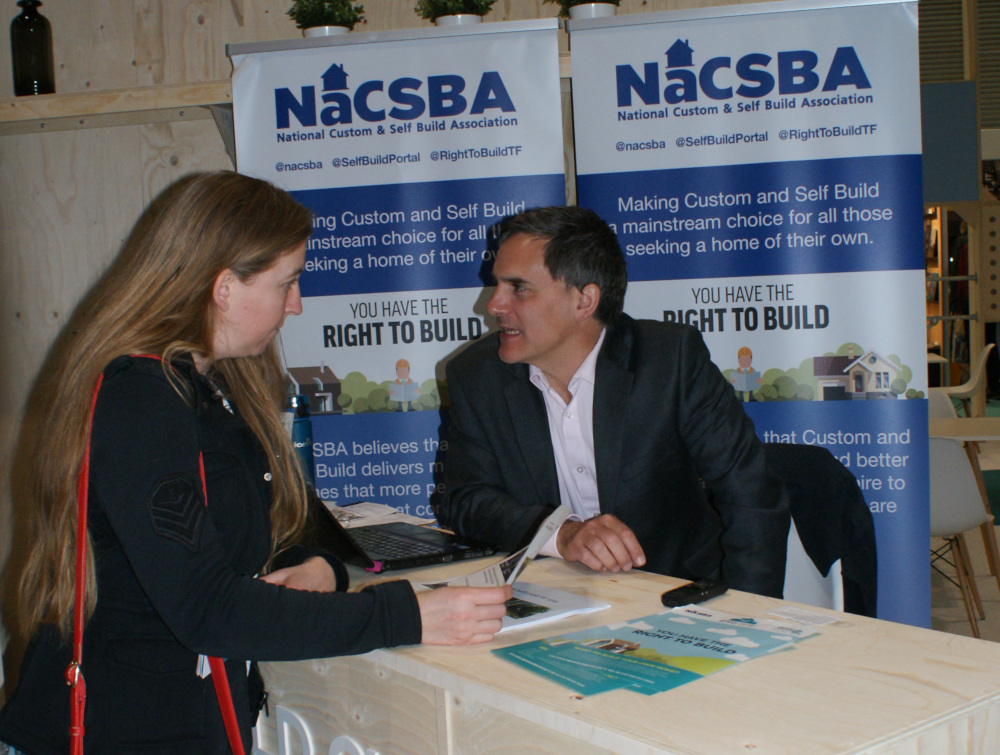
Custom and self-build homes are helping deliver the housing this country needs – a key part of reaching 300,000 a year by the mid-2020s. We’re supporting those who want to build these #MoreBetterFaster homes #SelfBuildWeek pic.twitter.com/5Ex2lGaeOx
— Ministry of Housing, Communities & Local Gov (@mhclg) May 10, 2019
Visitors to the Green Building Store’s Huddersfield Showroom got to find out more about the Right to Build and what it can – and can’t – deliver, while also finding more about the Green Building Store’s range of windows and MVHR systems.
The UK’s biggest Self Build Show Centre opened its doors and attendees to two of its Self Build Academy courses got an extra insight into the week and what it delivers.
The team at the National Self Build and Renovation Centre, the UK’s only permanent Self Build centre pulled out the stops with a discount for anyone signing up to its Self Build Course running through the week, as well as presenting on the Right to Build at the show, the following week.
Off the back of the week Self Build made the news with many papers covering the latest developments, not to mention The Street, including in the Metro, Sunday Times, Times and Financial Times.
NaCSBA would like to say a big thank you to the following companies.